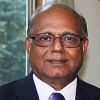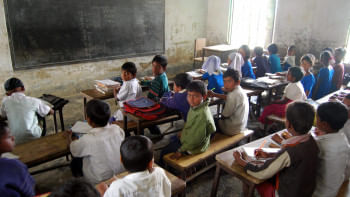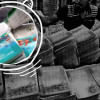What the HSC results mean for our youngsters

Results of the Higher Secondary Certificate (HSC) examination, which signifies the end of 12 years of schooling, is a milestone in the life of young people who can reach the higher secondary stage. Only one in four of those aged 17-18 years have this privilege, and among them, a select minority with good enough scores will go for higher education, picking programmes and institutions in the face of intense competition for admission.
The internationally-proclaimed Sustainable Development Goal (SDG) 4 is to ensure free, equitable, inclusive and quality primary and secondary education for all by 2030. Bangladesh has accepted the SDG agenda, including the education goal, but there is no time-bound plan yet for extending quality education up to 12th grade, to the majority of youths who are deprived of this service, despite the rhetoric about smart citizens for Smart Bangladesh by 2041.
Of the 1.1 million students who appeared in the HSC exams in 2023 under the nine general education boards (except the technical education and madrasa boards), 75.9 percent passed, with 78,521 securing the highest score of GPA 5. Of the examinees under the technical education board, 136,751 or 91.25 percent passed. Under the madrasa education board, just over 86,000 or 90.75 percent passed. The overall pass rate for HSC and equivalent examinations was 78.64 percent, meaning a total of 1,067,852 students passed. The total pass rate this year saw a reduction by seven percentage points from last year's rate of 85.95 percent. The number of those who got GPA 5 also dropped by half.
Several questions are frequently being asked now. Do the results indicate a dip in the quality of instructions and performance of students? If so, what may be the reasons? What can be done about it?
In the absence of adequate research-based evidence, various speculative explanations are being offered. The tests last year were based on a limited number of subjects and a shortened syllabus, whereas this year's exams incorporated the full syllabus and all subjects. There are lingering effects of the pandemic-induced school closure, which led to promotion of students during two successive school years without examinations and normal teaching and learning. Students did not have a chance to recover from the learning loss. And so, the consequences were evident when a regular examination with all subjects was conducted.
These explanations are not unfounded; they are supported by some studies and surveys undertaken. However, these do not quite explain the wide variation in the average results among the boards. Jashore, at the bottom, has a pass rate of 69.88 percent, compared to Barishal's rate of 80.65 percent. Are Barishal schools on average that much superior to those in Jashore to merit an 11 percentage-point difference? The technical education and madrasa boards have also shown pass rates higher by 15 percentage points. Can it be plausibly claimed that technical institutions and madrasas are significantly superior when compared with general education institutions in the country? The results raise questions about the validity and reliability of the tests; that is, they do not measure reliably the knowledge and skills acquired by students.
The tertiary-level institutions—the public and better private universities, general colleges and professional education institutions, such as medical and engineering colleges—do not take their admission decisions based on HSC results. They administer their own admission tests, using the HSC results only to screen out candidates for the said tests. It has been found that the top scorers in HSC do not necessarily do well in the competitive admission tests.
There are enough tertiary education institutions in the country to accommodate all HSC graduates who want to go for further education, but not enough places in reputed institutions to satisfy students' choices. In other words, while institutions, both public and private, have mushroomed in recent decades, there are not enough with acceptable quality and management standards. Students as well as parents and prospective employers have no confidence that these institutions will prepare youngsters for decent employment or specialised, advanced or professional education later on.
The anxiety and questions of parents, concerned citizens and young people themselves about the pass rate, GPA, variations among boards, and overall life prospects point to serious policy and strategy issues in the education system. These call for a comprehensive soul-searching by the highest political and administrative level. The signs for such an exercise being launched are not evident. The least that may be done is to recognise that in our school education, three kinds of problems need to be probed seriously to find workable approaches to address these issues.
One, why do exam results vary so much, beyond the range of normal probability, among boards and streams of education in any one year and from year to year?
Two, to what extent do HSC exams and the prior SSC exams provide a credible assessment of student learning and their future educational performance?
Three, how can the skills and competencies intended to be acquired by students during the final, critical two years of schooling be better defined in the context of changing times? And what does this mean for better teaching-learning and better measurement of learning to enable a large segment of youths to move on to decent livelihood opportunities, and the others to advanced general and professional education and training? The issues revolve around both curricular offerings and the quality of instruction and training offered.
The education authorities will claim that an initiative to address these issues is the new school curriculum of "experiential learning," being rolled out at primary and secondary levels. This project has given rise to controversy about whether too much is being attempted too rapidly without preparing the ground and ignoring the pre-existing weaknesses in the school system, especially in preparing the teachers. The higher secondary curriculum and its implementation in classrooms also have to be reformed, but that is a task that remains for the future.
Meanwhile, the HSC milestone is more a source of anxiety and premonition for the large majority of young people, rather than the exciting beginning of a new stage of preparation for life and livelihood.
Dr Manzoor Ahmed is professor emeritus at Brac University, chair of Bangladesh ECD Network, and adviser to Campaign for Popular Education (CAMPE).
Views expressed in the article are the author's own.
Follow The Daily Star Opinion on Facebook for the latest opinions, commentaries and analyses by experts and professionals. To contribute your article or letter to The Daily Star Opinion, see our guidelines for submission.

 For all latest news, follow The Daily Star's Google News channel.
For all latest news, follow The Daily Star's Google News channel. 









Comments